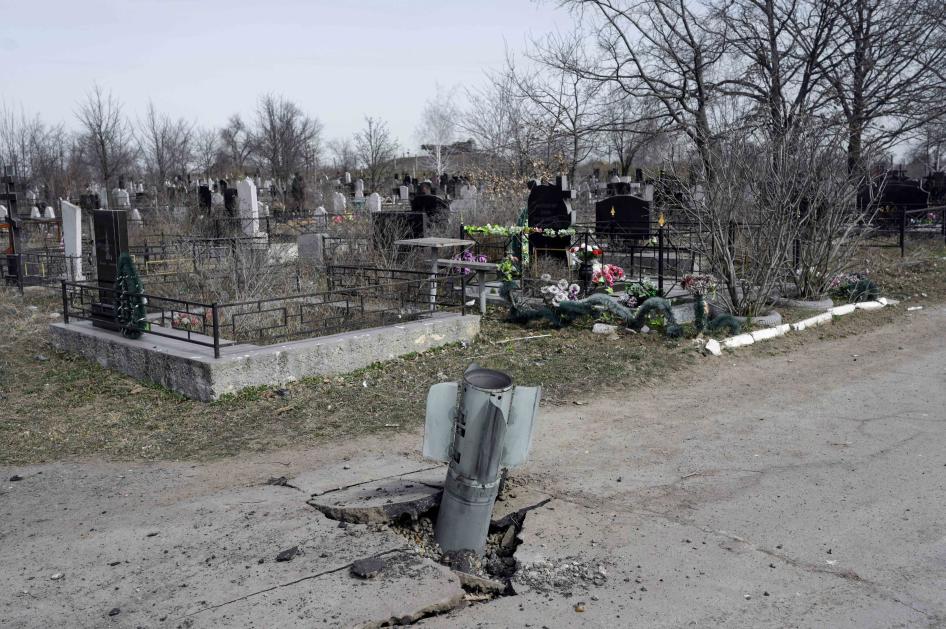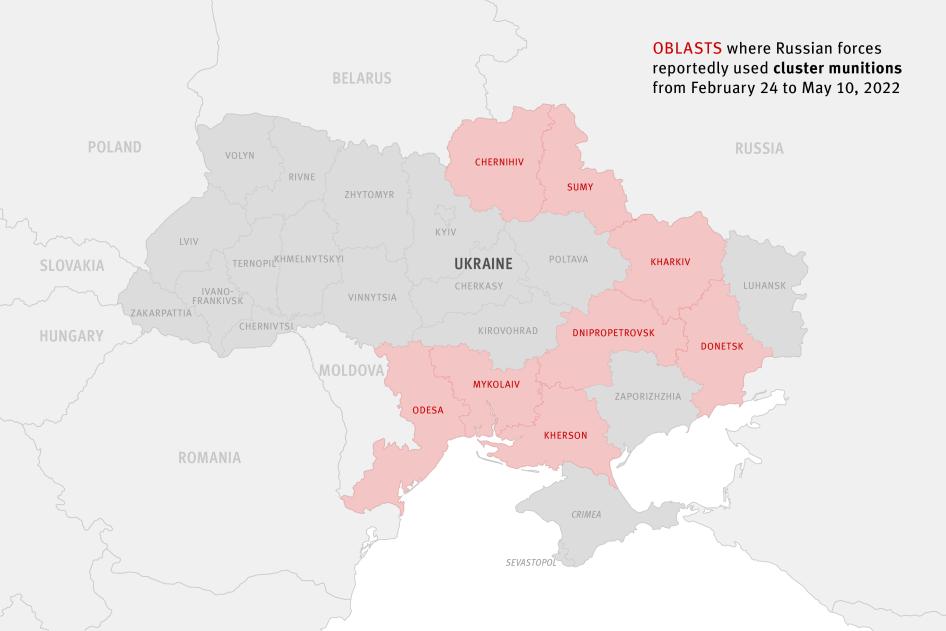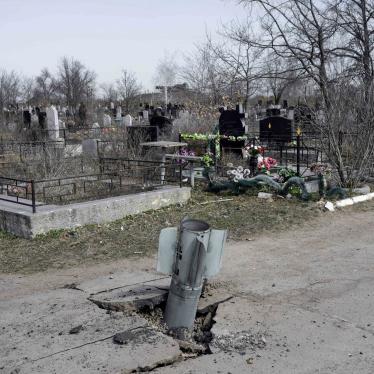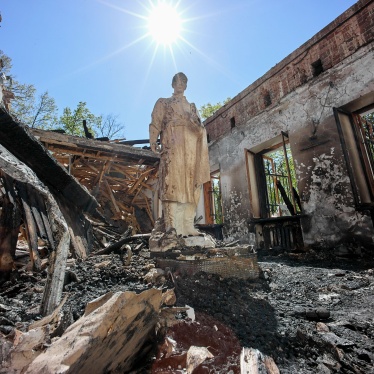- Russian armed forces have used at least six types of cluster munitions in attacks in Ukraine, and Ukrainian forces also appear to have used them at least once.
- Cluster munitions spread multiple explosive submunitions or bomblets over a wide area and leave dangerous duds that can kill and maim, like landmines, for years or even decades.
- Russia and Ukraine should immediately end their use of cluster munitions and both countries should join the international ban treaty.
(Geneva) – Russian forces have repeatedly used cluster munitions in attacks that killed hundreds of civilians and damaged homes, hospitals and schools since its invasion of Ukraine. Ukrainian forces appear to have used cluster munitions at least once. Both countries should cease their use of this banned weapon and commit to joining the international treaty prohibiting cluster munitions.
The 20-page report, “Intense and Lasting Harm: Cluster Munition Attacks in Ukraine,” details how Russian armed forces have used at least six types of cluster munitions in the international armed conflict in Ukraine.
“Russian forces’ repeated use of cluster munitions in populated neighborhoods in Ukraine causes immediate and long-term civilian harm and suffering and needs to stop,” said Mary Wareham, arms advocacy director at Human Rights Watch and author of the report. “Ukraine should also stop using these brutal weapons before more civilians are harmed.”
Human Rights Watch has documented several cluster munition attacks by Russian forces in populated areas in the cities of Chernihiv, Kharkiv, Mykolaiv, and Vuhledar. The exact number of cluster munition attacks in the 2022 conflict is not known, but hundreds have been documented, reported, or alleged.
In Mykolaiv, for example, Russian forces launched cluster munition rockets into populated areas on March 7, 11 and 13, killing civilians and damaging homes, businesses and civilian vehicles. One of the March 13 attacks killed nine people who were waiting in line at a cash machine, local media reported.
Russia has not denied using cluster munitions. It alleged that Ukrainian forces used cluster munitions in the city of Donetsk on March 14, but this has not been independently confirmed.
The New York Times reported that Ukrainian forces apparently used Uragan cluster munition rockets in an attack on Husarivka in Kharkiv oblast on March 6 or 7, when the village was under Russian control. Ukraine has not denied using cluster munitions in the current conflict but said that “the Armed Forces of Ukraine strictly adhere to the norms of international humanitarian law.”
Cluster munitions can be fired from the ground by artillery systems like rockets and projectiles or dropped from aircraft. They typically disperse in the air, spreading multiple submunitions or bomblets indiscriminately over an area about the size of a city block. Many fail to explode on initial impact, leaving dangerous duds that can kill and maim, like landmines, for years or even decades unless cleared and destroyed.
The cluster munitions currently used in Ukraine are launched from the ground in rockets and missiles with the exception of the RBK-series cluster bomb, which is delivered by aircraft. The cluster munitions were all manufactured in Russia, some as recently as 2021, or in its predecessor state, the Soviet Union.
According to Ukraine’s State Emergency Service a total of 98,864 items of unexploded ordnance including submunitions and landmines have been cleared and destroyed in the war, as of May 9. During the first seven weeks of the conflict, 29 workers were reportedly killed while doing demining and related work, and 73 were injured. On April 17, three people working for Kharkiv’s emergency services were killed while clearing cluster munition remnants.
Previously, both Ukrainian government forces and Russia-backed armed groups used cluster munitions in eastern Ukraine between July 2014 and February 2015, based on investigations by Human Rights Watch and others.
Russia and Ukraine have not joined the Convention on Cluster Munitions – the 2008 treaty banning cluster munitions – which requires destruction of stockpiles, clearance of areas contaminated by explosive cluster munitions remnants, and assistance to victims. The convention has 110 states parties.
The convention obligates each state party to make their “best efforts to discourage” the use of cluster munitions. At least 36 countries have condemned the use of cluster munitions in Ukraine, including the United Kingdom as the current president of the Convention on Cluster Munitions.
Human Rights Watch cofounded and chairs the Cluster Munition Coalition, the global coalition of nongovernmental organizations working to ban cluster munitions. Human Rights Watch will present its report to countries attending intersessional meetings of the convention at the United Nations in Geneva on May 16 and 17.
“Most of the world rejected cluster munitions years ago due to their widespread indiscriminate effects and long-lasting dangers,” Wareham said. “Condemning the use of cluster munitions in Ukraine will strengthen the global stigma against these weapons and help ensure that civilians are protected from them in future.”
“Intense and Lasting Harm” will be presented at the intersessional meeting of the Convention on Cluster Munitions, which opens at the United Nations in Geneva on May 16.











